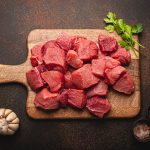
Red meat contains a type of iron that could increase a person’s risk of type 2 diabetes, a new study warns. People who ate the most foods high in heme iron — red meat and other animal products, mainly — had a 26% higher risk of type 2 diabetes than those who ate the least, researchers reported Aug. 13 in the journal Nature Metabolism. In fact, heme iron accounted for more than half of the type 2 diabetes risk associated with unprocessed red meat, researchers found. But non-heme iron, which is found in plant-based foods, had no link at all with type 2 diabetes, results show. “This study underscores the importance of healthy dietary choices in diabetes prevention,” said researcher Frank Hu, a professor of nutrition and epidemiology at the Harvard T.H. Chan School of Public Health in Boston. “Reducing heme iron intake, particularly from red meat, and adopting a more plant-based diet can be effective strategies in lowering diabetes risk,” Hu added in a Harvard news release. Heme iron comes from hemoglobin, a blood protein that facilitates the transport of oxygen in red blood cells. It’s commonly found in meat, poultry and seafood, and is more easily absorbed by the body than non-heme iron. For the study, researchers assessed the link between iron intake and type 2 diabetes using 36 years of dietary reports… read on > read on >










-150x150.jpeg)

-150x150.jpeg)




-150x150.jpg)
-150x150.jpeg)








-300x200.jpg)










